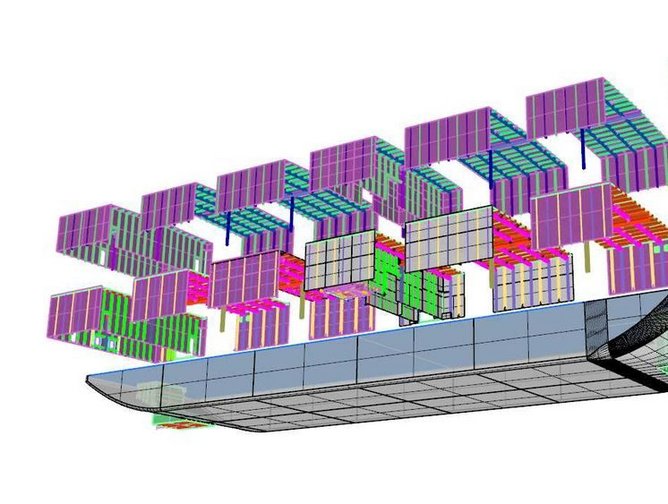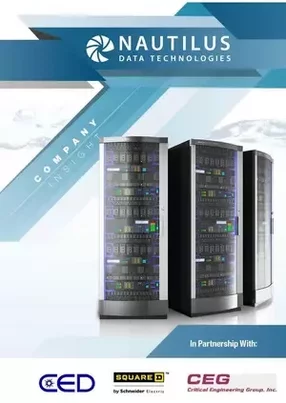The world is facing a data tsunami. With exponential growth happening already, how can more capacity be added quickly and economically? Where will all the energy needed come from when data centers are expected to consume 140 billion kilowatt-hours annually by 2020, costing American businesses $13 billion in electricity bills and emitting nearly 100 million metric tons of carbon pollution each year? How can emerging markets, the world's fastest growing, even hope to keep up? The traditional model is unsustainable; that's for sure.
Some eight years ago, Arnold Magcale had a lightbulb moment. A recognized technology industry expert with decades of experience in data centers and cloud management, he is also a US Navy Special Forces veteran. While assessing the large amounts of data that naval command centers process as they cruise in the Pacific, he asked the question: why can't we integrate the compact water-cooled solution they use to the world of enterprise? Why indeed do most of the world's data centers rely on outdated air conditioning technologies for cooling?
This led him to found Nautilus Data Technologies in 2013. At the time data centers were major contributors to the fact that 10 percent of global power production was being consumed by IT – a model that could not be sustained after 2025. He and his Director of Operations Byron Taylor set about bringing together the best engineering and technical minds to bear on the problem. Magcale had helped build one of the first data centers in Silicon Valley, close to where Nautilus is now located at Pleasanton, California. Taylor had held senior positions in the delivery of critical infrastructure – together they brought 60 years of experience in the data center environment.
They did not waste any time. “We launched a proof of concept (POC) in 2014 to validate our idea, partnering with the US Navy, Applied Materials and Veolia. It was called ‘Project Nautilus’ and the goal was to demonstrate how our water cooling technology could cut power usage, eliminate water consumption and significantly reduce air emissions without using any water treatment chemicals. The results exceeded our greatest expectations.” Validated by Jacobs Engineering and Critical Engineering Group, they succeeded in hitting unprecedented levels of power utilization efficiency (PUE), using high density racks. The exercise showed that Nautilus could cut a data center's operating costs by 30 percent, while delivering fivefold higher power density per rack and an 80 percent improvement in cooling efficiency.
How? Byron Taylor explains: “Data center temperatures must be kept cool inside the facility to maintain the equipment, but traditional air conditioning methods have been expensive and inefficient. Nautilus technology changes that. Arnold developed a way to use naturally chilled water to cool data center facilities. He integrated proven maritime and industrial technology with next generation data center infrastructure to advance the data center industry.”
The POC project was a fully functioning prototype, says Byron Taylor - a 100 foot vessel containing a five rack data center. “We ran that for five months, proved out all the systems and used it to do final design engineering. It helped us with componentry and design and it was on that basis that our final patents were issued.” The technology has been tested and validated at 74kW of load per rack and the new design is expected to reach 105 kW, with 10 times more capacity per rack than what's available in the commercial marketplace, he adds. The vessel was built at the yard of Linn Marine at Mare Island just 45 miles north of Nautilus' headquarters. Here too the company is now building a much larger 500-rack data center. Named Eli M, it's 230 feet long and 55 feet wide, nearly as big as a football field.
Sustainable
By siting the data center racks on a floating facility – basically a barge – a very high density could be achieved, reducing the footprint of the data center by a factor of 60 percent. The modular build methodology also allows Nautilus to deploy additional facilities in the same location, using the same connectivity and backbone infrastructure, by bringing another vessel to the site as demand dictates.
The impact on its environment is greatly improved. The racks of servers are on the data deck with mechanical and electrical equipment and UPS systems housed below. Cooling is achieved through an open loop that draws in seawater and returns it to the ocean at a differential temperature no more than four degrees Fahrenheit – undistinguishable 100 feet from the vessel. Through a heat exchanger it cools a closed freshwater loop that in turn cools the air being drawn from the racks.
In March 2016 Arnold Magcale succeeded in attracting one of the country's foremost environmentalists to lead the business, and himself stepped into the role of CTO. Jim Connaughton was Chairman of the White House Council on Environmental Quality from 2001 until 2009, and President George W. Bush’s senior adviser on energy, environment and natural resources. The task he took on as the new CEO was to transition the company to full commercial deployment. “We are leading the industry’s transition from air-cooled server farms to water-cooled facilities. Significant cost savings plus sustainability and innovation is our hallmark as we proceed to building our first commercial facility.”
Connaughton is spending a lot of his time traveling the globe, particularly Europe and Asia, meeting with international business leaders, technology professionals and environmental experts who want to pursue a more sustainable and economical data center solution. His latest trip was to Monaco to pick up the 2017 Cutting Edge Breakthrough Award from Datacloud Europe. “This kind of recognition only comes if the market sees a real opportunity. The sector is ready for it. We have something really different – we are confident that the market will respond to significant cost savings. They also like the low environmental footprint and will be interested to see how we accelerate the transition to high performance computing.”
Jim Connaughton believes that in 10 years' time most data centers will be water cooled. For now the global market is wide open to Nautilus and its investors, who according to Arnold Magcale, are right behind another of his visionary aims – to democratize the storage and transmission of data for the good of the developing world and the environment shared by us all.



